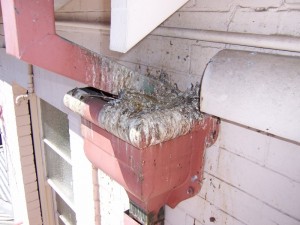Pigeons not only make themselves a nuisance by their roosting and nesting activity and their noisy behavior, but they also carry and transmit a variety of human and avian diseases. Pigeons and their nests can also harbor a number of ectoparasites that are known to attack humans. Pigeon droppings deface buildings and statues and their acidity can hasten the deterioration of these structures.
Droppings can foul areas where people walk, sit, or work and in large amounts can kill vegetation and produce flies and objectionable odors. Droppings that accumulate on stairs, fire escapes, or other walking surfaces make these areas slippery and dangerous. Debris from pigeons and their nests can clog gutters, downspouts, and drains.
Pigeons are known to carry and transmit diseases to humans through their droppings, especially when the feces dry and particles become airborne. It is rare for health officials to specifically attribute disease outbreaks to flocks of pigeons. The potential for transmission however is real and should be taken seriously when these birds live in close proximity to humans. Diseases spread by pigeons include aspergillosis, candidiasis, cryptococcosis, encephalitis, histoplasmosis, Newcastle disease, ornithosis, salmonellosis, and toxoplasmosis.

